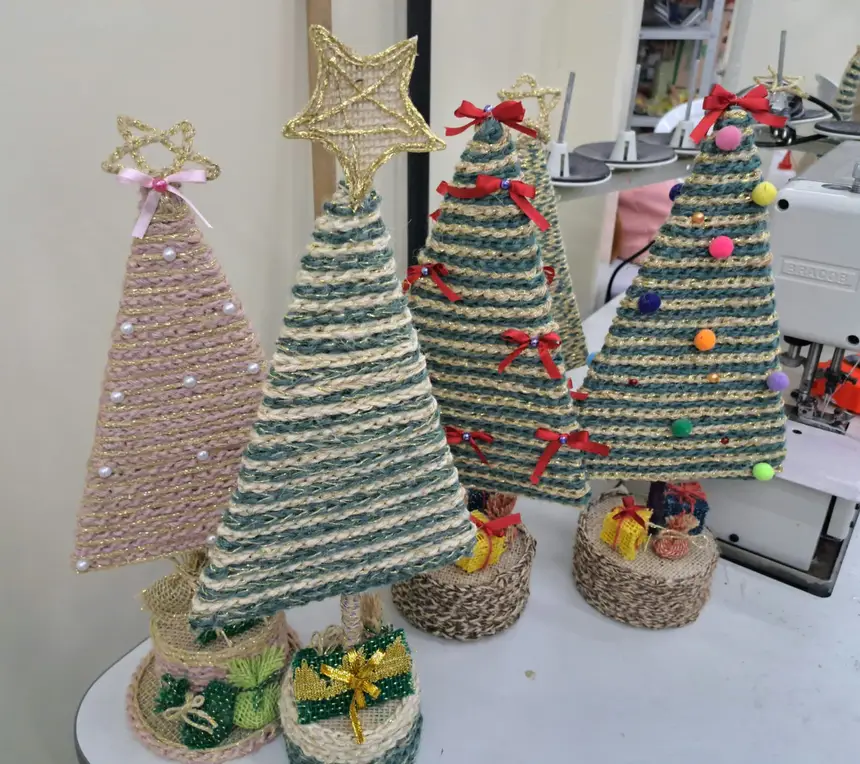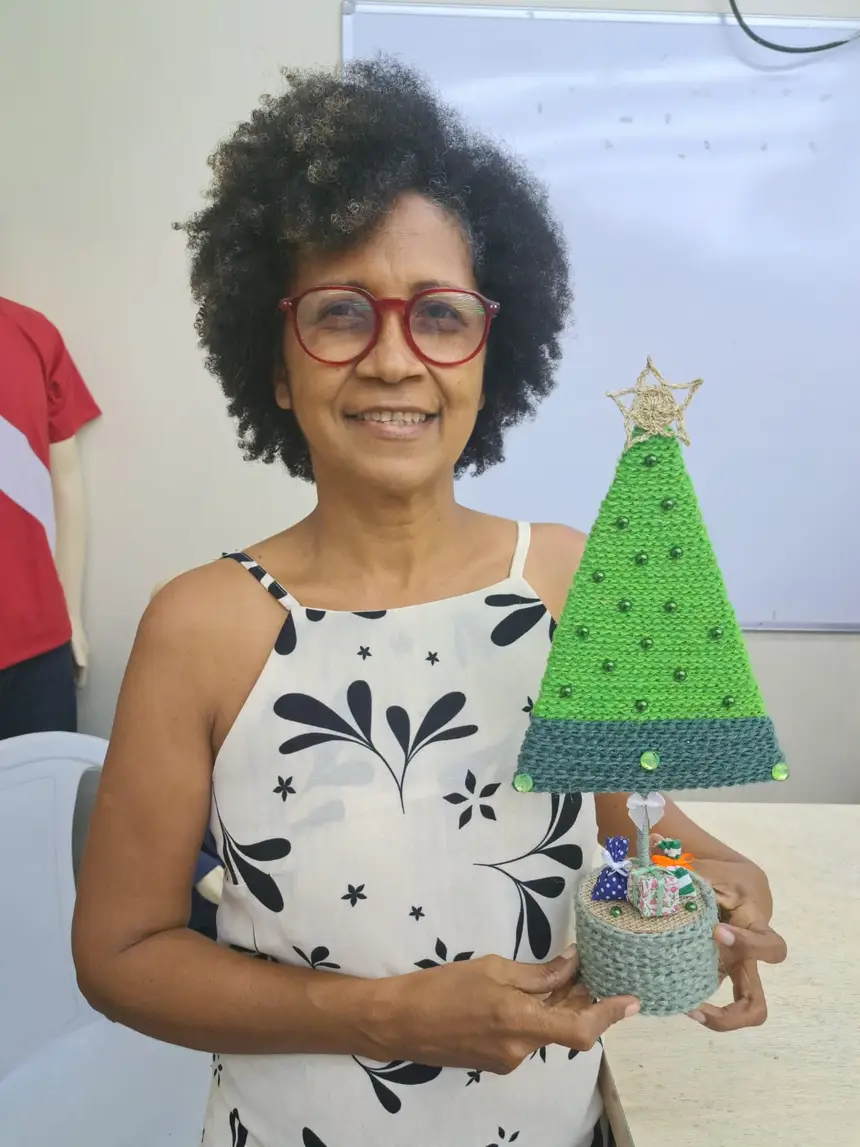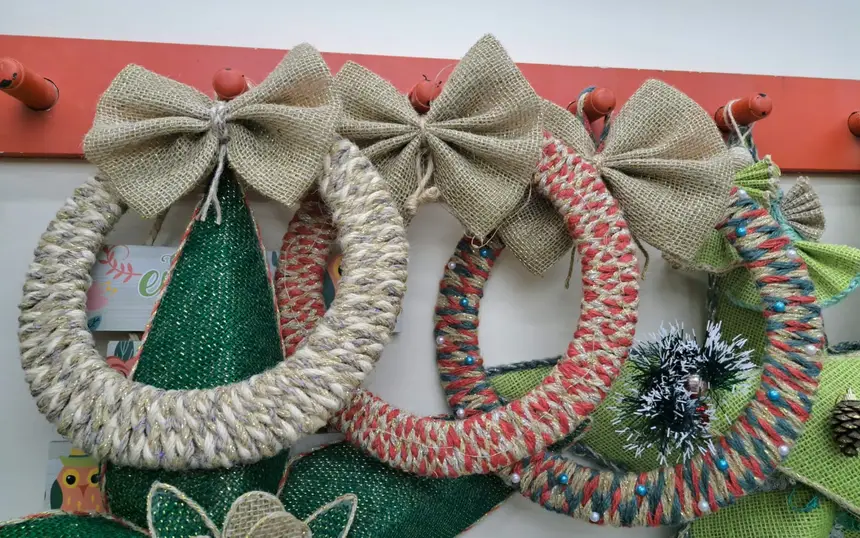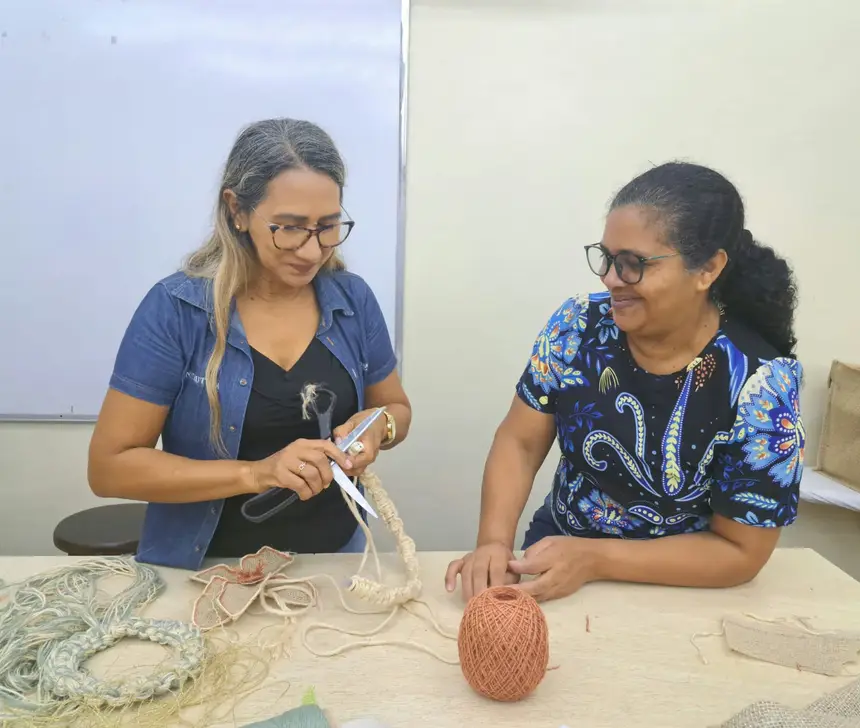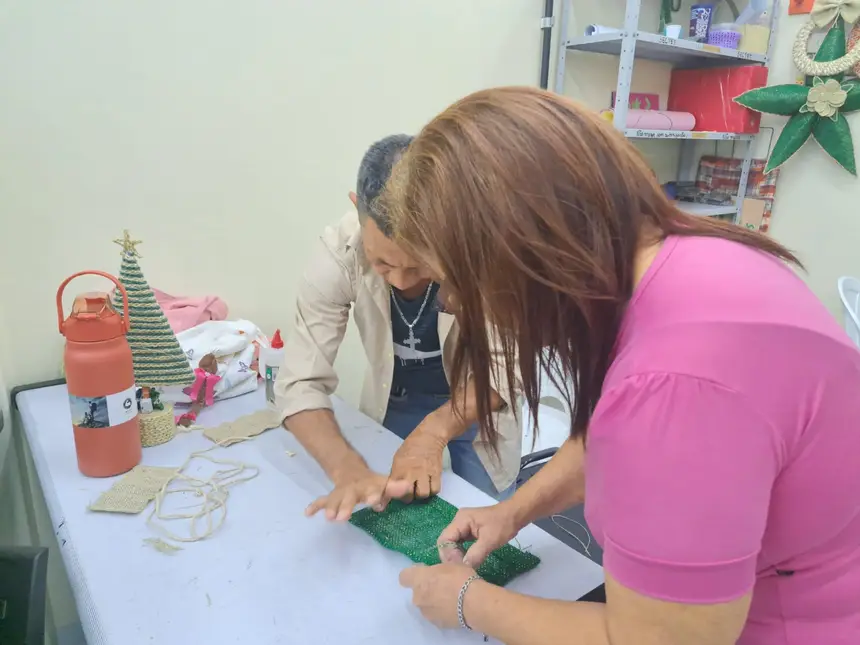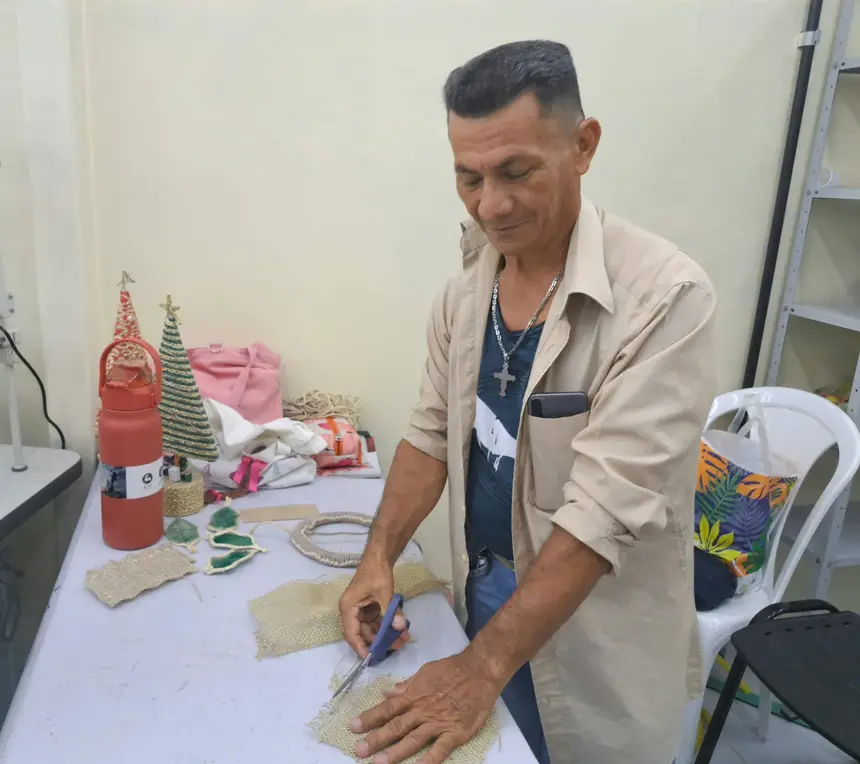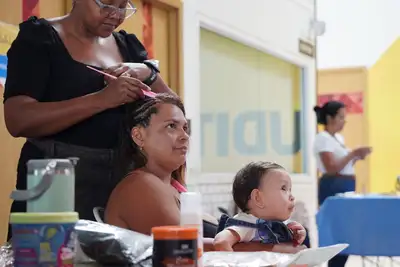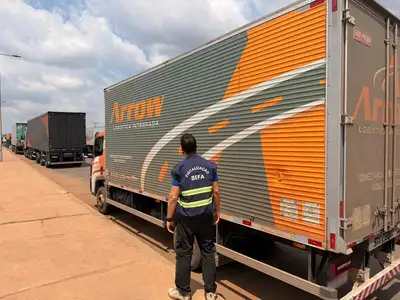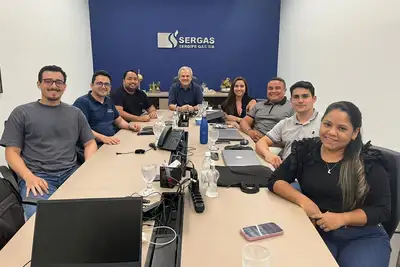Sedeme promotes Christmas crafts workshop with Amazonian malva at UsiPaz Cabanagem
The aim of the initiative is to contribute to sustainable socioeconomic development, encouraging entrepreneurship and income generation, focusing on the creative economy, using regional raw materials.
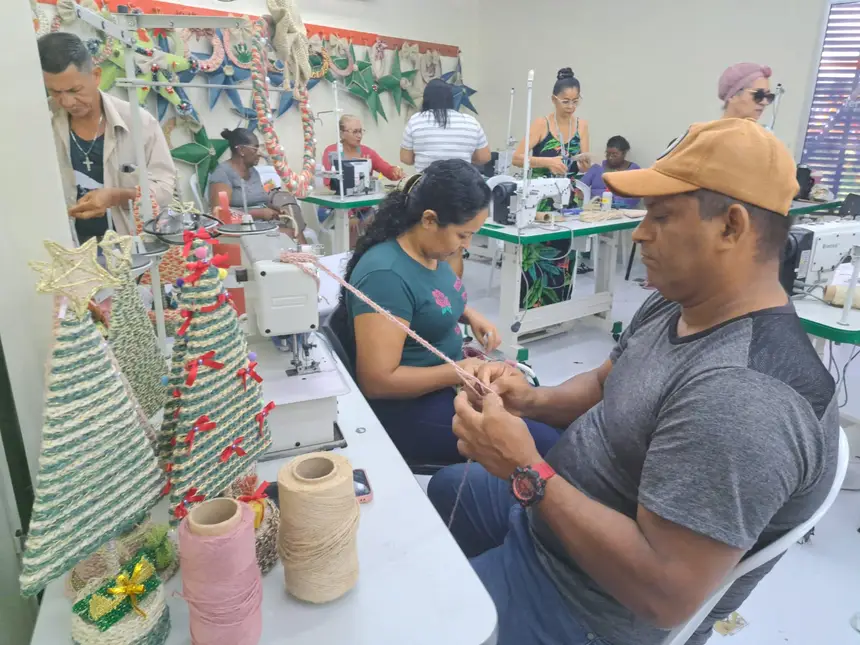
Twenty residents from areas near the Usina da Paz Cabanagem, in Belém, completed, on the afternoon of this Thursday (27), the workshop on Crafts in Amazonian Malva – Christmas-themed pieces, promoted by the Secretary of Economic Development, Mining and Energy (Sedeme), in partnership with the Castanhal Textile Company (CTC). The aim of the initiative is to contribute to sustainable socioeconomic development, encouraging entrepreneurship and income generation, focusing on the creative economy, using regional raw materials.
Focusing on the Christmas season, the workshop was dedicated to the production of thematic items — such as wreaths, Christmas trees, stars, angels, balls, and various other typical pieces of the date. The proposal was to take advantage of the festive moment, when the demand for decoration and gifts naturally increases. Thus, participants learned to produce handmade pieces with sustainable raw materials, ideal for composing Christmas environments or being used as gifts — contributing to income generation. At the end of the workshop, each participant received a complete kit from CTC to start commercial activities.
With a workload of 32 hours, the workshop began last Monday (24). At the end, completion certificates were issued. The activity is part of the course schedule offered by Sedeme under the Usina da Paz (UsiPaz) Project, which is part of the Territories for Peace Program (TerPaz), executed by the Government of Pará and coordinated by the Strategic Secretariat for Citizen Articulation (Seac).
The Secretary of Economic Development, Mining and Energy, Paulo Bengtson, emphasized: “By encouraging the use of this raw material, the Government of Pará strengthens the creative economy, promotes entrepreneurship, and encourages sustainable income generation for local communities.”

The workshop was taught by the CTC craft instructor, Rosilene dos Santos, who highlighted the potential of Amazonian malva as a factor for professional encouragement. According to her, malva is a natural fiber with various application possibilities, such as in the making of bags, handmade pieces, sacks, and others. During the classes, participants learned appropriate techniques for handling the fiber, using cutting, sewing, gluing, customization, embroidery tools, and other creative processes.
“The group performed excellently in all stages of creating the handmade pieces. It is always very rewarding to share knowledge. In fact, during the classes, we combine experiences: each participant has a peculiar way of working, and this enriches the production of pieces with unique design and characteristics,” emphasized Rosilene.
“The Usina da Paz of Cabanagem has established itself as a beacon of hope for the residents of the region,” said artisan Regina Amaral, 54, who is participating for the third time in a workshop on crafts in Amazonian malva. “The experience has been very rewarding,” she stated. An artisan for 15 years, Regina works with recyclable materials in the production of bags, jewelry, and other pieces. She highlights that with each course, she learns new techniques, expanding her creative possibilities. “Learning different ways to work with this material helps us secure extra income for the family,” she explained.
For Regina, malva is a versatile and easy-to-handle material. According to her, the knowledge gained strengthens the autonomy of artisans, stimulates entrepreneurship, and broadens income generation prospects in the community.
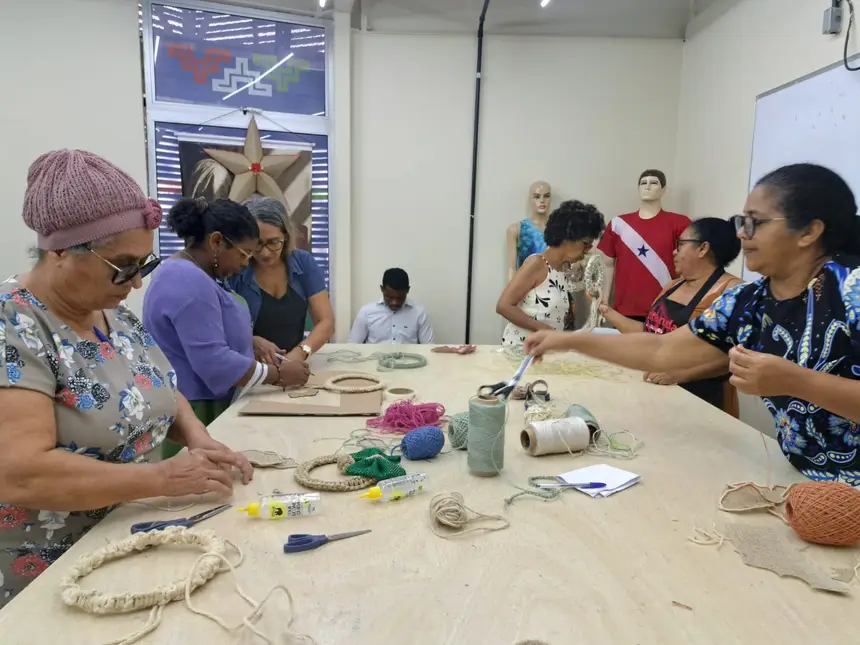
Nazareno Lima Rodrigues, 52, also completed the crafts course. He emphasizes that manual arts are a family legacy — a vocation that has been around for a long time, with about 20 years dedicated to making handmade pieces. For him, the usina emerged as a reference space, ideal for updating, perfecting techniques, and contacting new raw materials — especially those produced sustainably. I have been attending the usina since its inauguration; I have already taken a cutting and sewing course and also practice water aerobics. It is an environment that offers us not only training but also care for the body and mind.
Creative Job Market in Pará - According to Fapespa, in 2022, formal jobs in the creative economy represented 3.4% of the total formal links in the state. The sector showed significant expansion: there were 33,099 links in 2012, reaching 42,931 in 2022 — a growth of 29.7% over the period and 23.9% compared to 2021. The trade of souvenirs, jewelry, and crafts ranked third, with a 6.1% share. Compared to 2012, all activities grew, except for the manufacture of wooden furniture, which remained stable.


